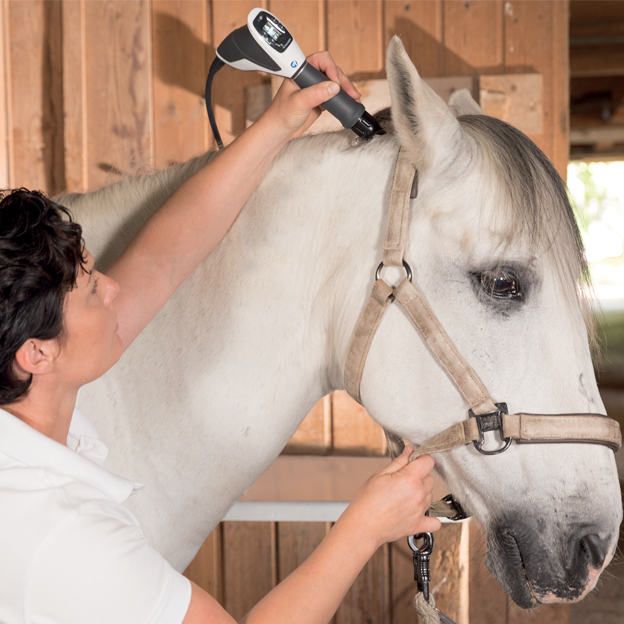The Power of Equine Therapy for Stress And Anxiety, PTSD, and Emotional Recovery
The Power of Equine Therapy for Stress And Anxiety, PTSD, and Emotional Recovery
Blog Article
Evaluating the Performance of Laser Treatment in Equine Treatment for Injury Recovery
The examination of laser therapy's effectiveness in equine injury rehab depends upon numerous elements, consisting of recovery time, pain reduction, and cells regrowth. Scientific studies suggest noteworthy improvements in problems like tendonitis and osteo arthritis, connected to boosted mobile function and elevated ATP manufacturing. Vets regularly observe premium outcomes with laser treatment contrasted to traditional approaches, placing it as an essential component in equine treatment. The need for continual tracking and personalized therapy strategies can not be overemphasized. What specific scientific evidence sustains these insurance claims, and just how do vets execute these procedures in practice?
Comprehending Laser Therapy
Laser treatment has become a critical tool in veterinary medication, particularly in the therapy of equine conditions. Known for its non-invasive nature and effectiveness, laser therapy entails the application of particular wavelengths of light to promote cells repair and minimize swelling. This healing technique is increasingly favored for its ability to accelerate the recovery procedure in equines experiencing a range of musculoskeletal injuries and persistent problems.
The primary system behind laser treatment is its capacity to enhance mobile functions. Additionally, laser therapy promotes vasodilation, enhancing blood flow and oxygen distribution to damaged cells, hence speeding up recovery.
In equine medication, laser treatment is especially advantageous for problems such as tendonitis, osteoarthritis, and injury recovery. The strategy is lauded for its pain-relieving residential or commercial properties, permitting steeds to reclaim mobility and function much more quickly. Vets additionally appreciate its minimal negative effects compared to various other treatment techniques, making it a reliable and risk-free option for equine treatment.

How Laser Treatment Functions

Upon absorption, these photons cause a collection of biochemical changes, enhancing mitochondrial feature and causing enhanced adenosine triphosphate (ATP) production. This increase in ATP increases cellular metabolism, promoting cells repair service and regrowth. In addition, laser therapy regulates inflammatory responses by impacting cytokine degrees and reducing oxidative anxiety, therefore easing discomfort and swelling.
An additional significant facet of laser therapy is its function in enhancing microcirculation. The therapy advertises vasodilation, boosting blood flow and oxygen distribution to broken tissues (Equine Therapy). This helps with the elimination of cellular particles and sustains the spreading of fibroblasts and collagen synthesis, crucial for wound healing
Scientific Proof
The efficiency of laser treatment in equine treatment has been confirmed via numerous medical research studies, showcasing its healing potential across an array of conditions. A research study you can try here carried out by Turner et al. (2012) showed that horses treated with low-level laser therapy (LLLT) for tendon injuries showed accelerated recovery contrasted to those obtaining standard treatments.
In a similar way, research study by Johnson and associates (2015) concentrated on equine muscular tissue injuries, revealing that laser therapy significantly quickened muscular tissue fiber regrowth and minimized muscle tightness. Clinical evaluations have actually revealed that laser therapy can relieve persistent problems such as osteo arthritis.
Veterinarian Insights

Veterinarians likewise appreciate the flexibility of laser therapy. It can be used for a vast array of problems, from superficial wounds to deeper musculoskeletal injuries. Dr. Emily Brown highlights its energy in dealing with problems like tendonitis and osteoarthritis, where standard treatments commonly fail. She mentions that laser treatment can be tailored to the particular demands of each equine, making sure optimal outcomes.
Additionally, veterinarians value the capability to integrate laser therapy with various other treatment modalities. This multimodal strategy can improve general therapy efficacy, supplying an extensive service for equine rehab. Such endorsements from experienced professionals highlight the growing approval and application of laser treatment in equine medicine.
Practical Factors To Consider
A key element of executing laser treatment in equine therapy entails understanding the sensible considerations that guarantee its effectiveness and safety. blog It is important to select visite site the ideal laser tool, as numerous kinds differ in wavelength, power, and penetration deepness. Vets should be skilled in these parameters to tailor therapy procedures properly to each injury kind
Moreover, the frequency and duration of laser treatment sessions need cautious planning to take full advantage of healing advantages while reducing any type of prospective negative effects. Constant monitoring of the steed's reaction to treatment can guide necessary modifications in the therapy regimen. Establishing a risk-free and regulated environment throughout therapies is additionally vital to avoid unintended exposure to laser discharges, which could hurt both the horse and the handler.
Educating and accreditation of employees administering laser treatment are vital to ensure correct strategy and to support safety and security requirements. Furthermore, preserving precise documents of each session, including laser settings and observed results, is important for assessing the total effectiveness of the treatment and for making data-driven choices.
Final Thought
Laser therapy has actually emerged as an effective technique in equine injury recovery, supplying substantial advantages in recovery time, discomfort alleviation, and tissue healing. For optimum results, continual surveillance and personalized therapy protocols stay necessary in leveraging the complete possibility of laser treatment in equine care.
Report this page